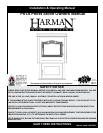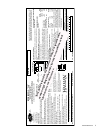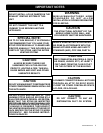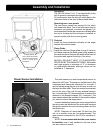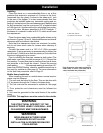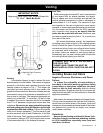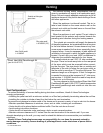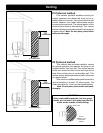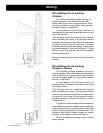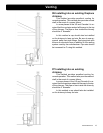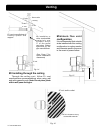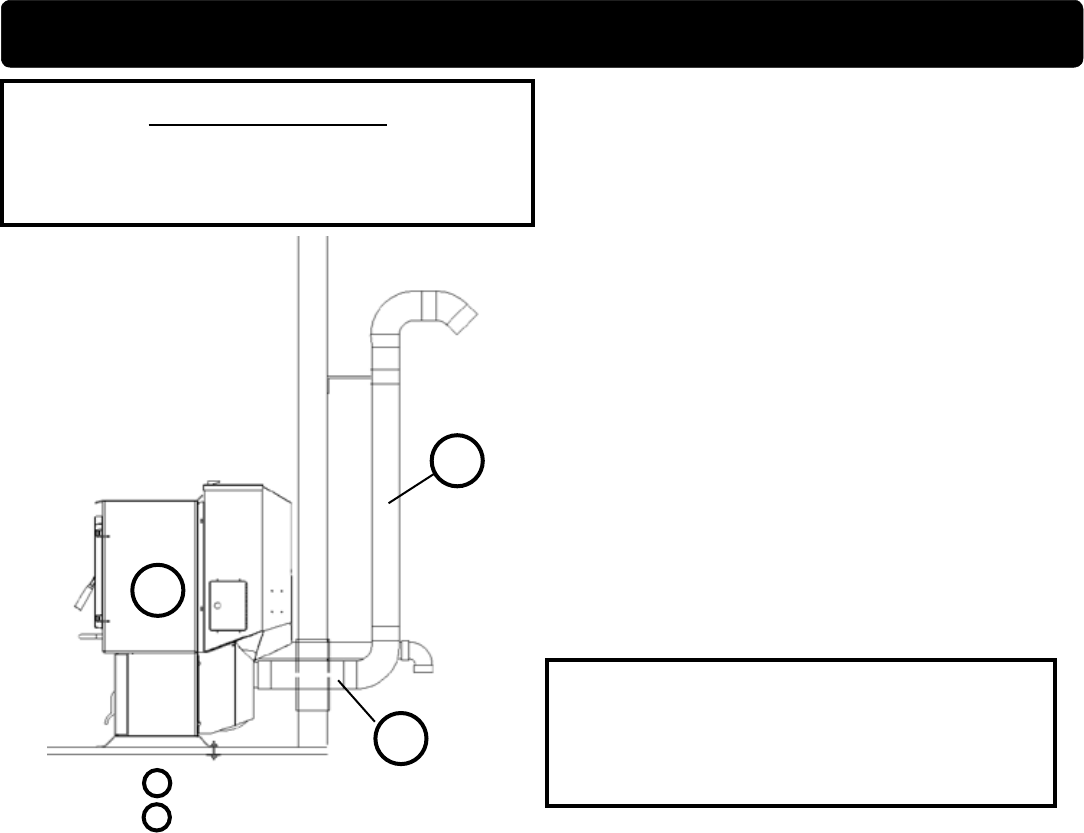
9
P61A Pellet Stove
Pellet venting pipe (known as PL vent) is constructed
of two layers with air space between the layers.
This air space acts as an insulator and reduces the
outside surface temperature to allow a clearance to
combustibles of 1 to 3 inches. The sections of pipe
lock together to form an air tight seal in most cases.
However, in some cases a perfect seal is not achieved.
For this reason and the fact that the P61A operates
with a positive vent pressure
Aluminum tape
can also be used for any joint that is 1 ft. or more from
the outlet of the stove.
We cannot emphasize enough, the importance
of sealing every seam and joint in the venting system
which is inside the home. Even the smallest pin hole
can leak and when it does you will smell wood smoke
or a creosote smell in the room. If this occurs check
for leaks. Leaks are easiest to see during start-up.
Alternatively you can use a smoke pellet to leak test
the venting before lighting your rst re.
T
without exhaust
blower operation. Negative pressure in the house will
resist this natural draft if not accounted for in the pellet
appliance installation.
Heat rises in the house and leaks out at upper levels.
This air must be replaced with cold air from outdoors,
which ows into lower levels of the house. Vents and
chimneys into basements and lower levels of the house
can become the conduit for air supply, and reverse
under these conditions.
Approved Pellet Vent Pipe- Widely Known As
"PL Vent",
= Positive Static Pressure
= Negative Static Pressure
+
+
-
+
-
Fig. 7
A combustion blower is used to extract the com-
bustion gases from the rebox. This causes a negative
pressure in the rebox and a positive pressure in the
venting system as shown in Fig. 7. The longer the
vent pipe and more elbows used in the system, the
greater the ow resistance. Because of these facts we
recommend using as few elbows as possible and 15
feet or less of vent pipe. The maximum horizontal run
should not exceed 48". If more than 15 feet of pipe
is needed, the interior diameter should be increased
from 3" to 4" because a larger pipe causes less ow
resistance.
The use of a starting
collar is not always necessary. The rst piece of pipe
must be secured, with at least 2 fasteners, to the ue
collar of the stove. The 2 screws provided are self-drill-
ing, however, drilling a 3/32" pilot hole for each screw
is recommended due to the material thickness.



